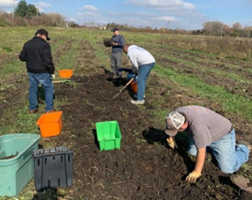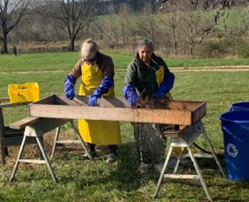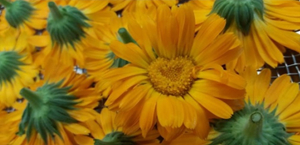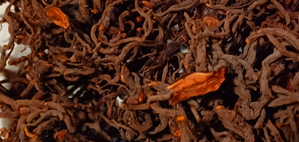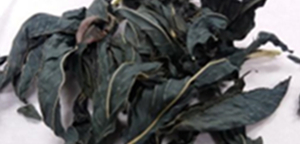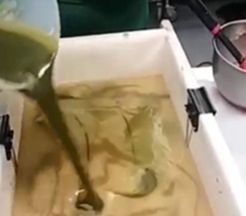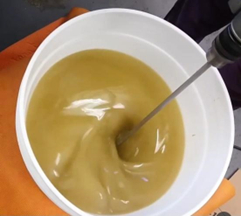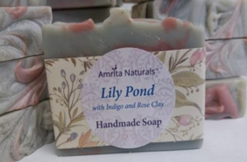
Home >> Newsletters > GreenFriends Newsletters > Q3 2024 Newsletter
| Home | Source Reduction | Friends of Green Friends | Newsletters |
| Gardening | Resources | What You Can Do | Embracing The Trees |
| The Blessings of Nature - Striving for Harmony in All We Do |
| Amrita Naturals Soap & Bodycare Products |
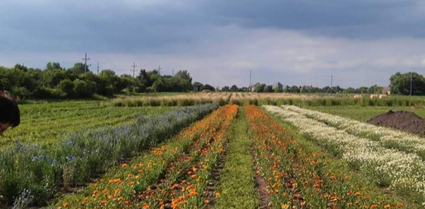 MA Center Chicago farm |
|
"Nature gives all of her wealth to human beings. Just as nature graciously serves, protects and helps us, it is our responsibility to return that dedication and service by helping her. Only then can harmony between nature and humanity be preserved " - Amma |
|
In the Beginning In the early beginning of Green Friends here at MA Center Chicago (MACC), two of us were co-coordinating the projects. As setting up beekeeping and other projects were costly, we realized that to be a viable ashram program there needed to be funds coming in, and not just going out. Somehow the thought came forward from the recesses of my mind – "Oh! I made handmade soap once back in the 80’s with my friends!" And I decided to give that a try again. So, I researched, found a nice recipe online, bought ingredients, and made soap in my room. To put it nicely, it was not very attractive! I did continuous research and experiments, an AYUDH project, and with Amma’s grace, it slowly got better. Finally in the fall of 2015, we took samples to Amma and she gave her permission for space to be made available for us to officially make products for sale. A bit later, I was shown an array of salves and lotions brought over with the question,“can we make these here?” I took a look. They were lovely, but had some ingredients that could be more naturally derived and certain other ingredients could be added that would make them more effective. This led me to explore the wilder parts of the property more, and to start farming the most important herbs to use, such as calendula. |
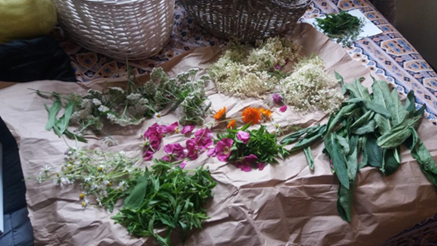
Drying some of the many healing plants |
||
|
The foundation of the bodycare products is utilizing the healing plants that grow here in abundance. Some of the most maligned 'weeds' have important jobs in nature. Deep rooted and 'pesky' yellow dock and burdock root serve the purpose of breaking up compacted soil. These two roots are very healing as well for skin, hair and blood. Dandelions, besides being highly healing and nutritious, pull toxins like pesticides out of the soil. All of these plants help the soil here at the ashram but are not included in any of the products. Some of the most humble 'weeds' are very healing – plantain, yarrow, and comfrey are good for skin and injuries; and herbs such as nettle, red clover, mullein, elder, and violets are nutritious and healing. We sometimes blame a plant for something it didn’t do! Goldenrod is thought to cause allergies, but it is actually the healing remedy for allergies. The real cause of this particular suffering is its look-alike neighbor ragweed – which dumps copious amounts of pollen into the air, making you sneeze. Goldenrod makes a gorgeous golden yellow natural dye as well. When harvesting wild herbs, it’s important to approach them as our friends and neighbors instead of 'crops', being mindful of their purpose for being there, and harvesting only small amounts. |
||
| The Other Essential Part of Bodycare Production is the Farm | ||
|
||
|
We are so grateful for our incredible farming staff and volunteers, for production couldn’t happen without them. Many volunteers and devotees come together when there is a large job to do. Early on in our project, soil expert Faith Reeves came and evaluated and amended our soil. She chose specific groundcover plants to protect and restore the soil between uses, as we rotated areas. The soil quality continues to be incredibly good without further treatments. Furthermore, no chemical amendments, fertilizers or pesticides are used anywhere on the ashram property. Another expert who has supported us is our neighboring farmer who has helped us wonderfully many times. One year there was an issue with laying down the protective row covers and getting the plants in. The farmer himself came out and ran the huge water wheel transplanting machine that punched holes in the rows and released water. We sat on two seats just barely off the ground – giggly and laughing as we struggled to plop the plants in place. Others helped with guiding the machine, and one followed behind tamping the plants. Most likely the jolly and fun atmosphere was not usual for this task, and the next day the farm owner said – "It was like church!" Amma does say to do our seva with joy and laughter – it was a good example that day! |
|
Besides plants for the soap and herbal products, we have also grown a number of dye plants,
such as Hopi black dye sunflowers, madder root, and Japanese indigo. We use the dye plants to color the soap and body care products as well. |
|||
|
|||
|
Some of the madder root was sold to a well-known natural dye company – they listed it online as 'the best madder root they had ever carried'. Indeed it dyed cloth to a very rich almost cherry red, instead of the usual rust color. Many devotee volunteers came together to dig, scrub, chop and dry the roots. Later, we sent our five-year harvest to Amritapuri for their dye projects. Through experimentation, we also came to know that tulasi dyes cloth to a beautiful bronzy-green. The dye and other plants are the only source of color for the body care products, such with the exception of naturally colored clays for some soap. some of the colorant plants used are indigo, madder root, and chamomile. As we keep from using water in any formulas (except soap) because that would make chemical preservatives necessary, we use oils infused with the herbs to capture the color and properties. We also use no harmful chemical fragrance oils but only high-quality essential oils to scent the products. Additionally, all our body care products are produced according to stringent standards for sanitation and quality control. The quality and appearance of the soap and body care products improved a lot after experimentation and research and learning how to incorporate plants, to color naturally, and which oils and butters to choose for the results wanted. It’s all about the fatty acid profiles! |
| Body Products | ||
|
||
|
The handmade soap is currently made in 35-pound batches – the most amount able to be hand lifted. The oils and butters are melted and combined. Then the measured lye solution is made with water, and sometimes with added goat milk or herbs made into a tea. A face shield, heavy protective gloves and apron are worn for safety. The lye solution fumes are hot and the high pH will burn, so it is placed in the sink with a hood fan running. Once cooled, the lye solution is carefully poured into the mixed oils that are already scented, and a long whipper is used to mix it together to what is called 'trace'. Not so little or it might separate out, but not so much that it gets too thick to pour correctly. Some of the batter can have various colors added for a decorative element. The soap batter is poured carefully into molds - loaf shape or slabs, a large block, or decorative individual shapes. These are covered and sit overnight or so to get just firm enough to cut. Too hard and the cutting wires can snap. Individual molds go into the freezer, so they will pop out of the fancy molds without distorting or sticking. Soap has to sit in a dry, cool place for a minimum of six weeks, to cure, so the pH becomes mild and the excess water dries out. Soap is a ‘salt’ with a crystalline structure. The older the soap, the more lather and more mild it gets. The finished soap gets wrapped with Florentine book binding paper and labeled for sale. |
||
|
||
|
Our body butters are a big lesson in paying attention to fatty acids. One of the three butters we use is known for leaving a gritty feeling if it’s not tempered correctly. The blend of oils and butters has to be heated slowly and thoroughly so the hard element melts, and then cooled really fast so it doesn’t separate back out. So it is a game of putting it in the freezer, then whipping it some, re-cooling to thicken, whipping again, repeat, repeat. Soon though, it starts whipping into the silky fluff it’s supposed to be and that’s a happy moment! The first 'Boo Boo' (Rescue) salve was made way back in the late 90’s for my daughter when she was little and I was in Ayurvedic school. The recipe has evolved, and now contains plants from the ashram. It still has yarrow as a main ingredient, commonly known as ‘wound wort’. It also contains bee propolis, which is made by the bees from resins and pollen. Trees weep out resin to heal themselves from any wounds in their bark, and to prevent disease from entering. So it is very healing for us, too. The 'Relieve' Pain Balm contains a hard-to-find but amazing ingredient – Balsam Poplar buds. These get harvested in the early spring from fallen branches (the trees are very tall). The buds would develop into new leaves, so it is also the most sustainable way to harvest. The buds are quite gooey and have an intoxicating maple-y scent. They contain salicin, the pain reliever in aspirin. It is a complex formula, with ingredients meant to address the various causes of pain. |
||
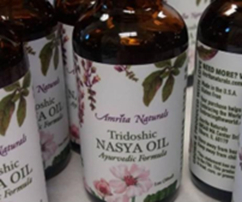 |
||
|
Nasya is a well known Ayurvedic remedy that goes in the nose. It can be formulated for different uses. In Ayurveda the nose is also considered a channel to the brain, so it can be used for brain health and memory. A main use is for respiratory health and issues. Ours benefits both. In Panchakarma, the nasal channel is filled with oil and snuffed up, but we can simply put a couple drops on the back of our hand and dab the inside of the nostrils. This helps lubricate the tissues especially in the dryness of winter, and helps keep out allergens and germs. Our Nasya Oil contains both Ayurvedic herbs and those grown here. I’m so very grateful for Amma allowing me to do something useful. It is amazing how Amma is able to pull together the mish-mash of everyone’s abilities and experiences into something new and unexpected. My deepest thanks to Amma, Swamis and Swaminis, devotees, experts, helpers and ashram brothers and sisters who have made everything beautiful and full of love. Aum Amriteshwarya Namah Rajashree - MA Center Chicago |
Read Organic Home Gardening: A Husband’s Survival Guide in the Q3 2024 Newsletter >>
| Home | Source Reduction | Friends of Green Friends | Newsletters | Resources | What You Can Do | Embracing The Trees |
For more information, e-mail info@greenfriendsna.org |
||||||
